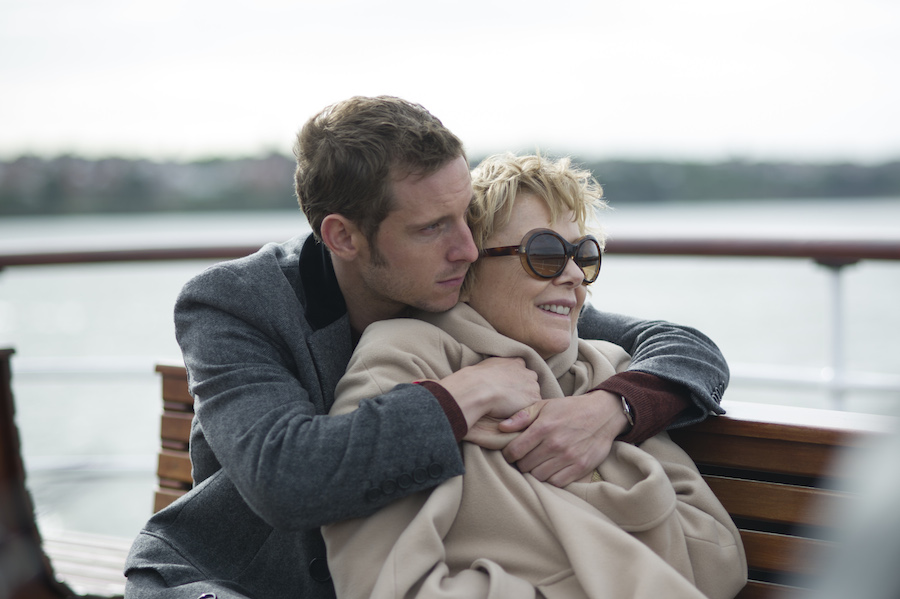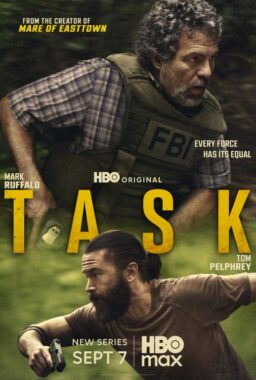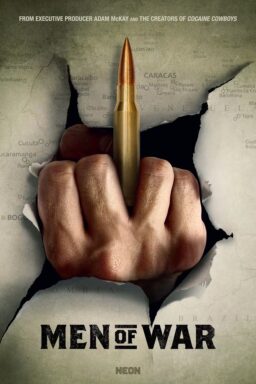Few actors in cinema history have been granted a film debut as monumental as the one Jamie Bell had in the title role of Stephen Daldry’s sublime 2000 crowd-pleaser, “Billy Elliot.” Like his iconic character, Bell began dancing at a very young age while fighting against the stigma attached to men who dared to hoof it professionally. For his astounding performance, Bell deservedly won the BAFTA for Best Actor over that year’s Oscar-winner, Russell Crowe, and has since then built an impressive resume with roles in such memorable titles as David Gordon Green’s “Undertow,” Lars von Trier’s “Nymphomaniac” and the AMC series “TURN: Washington’s Spies.” Yet in his latest picture, Paul McGuigan’s “Film Stars Don’t Die in Liverpool,” Bell delivers what may be his best work to date as Peter Turner, a young actor who fell deeply in love with screen legend Gloria Grahame (Annette Bening) during the last years of her life. Grahame was 29 years his senior, and Turner’s relationship with her began long before he discovered her magnificent career, which earned her a Best Supporting Actress Oscar in 1952 for Vincent Minnelli’s “The Bad and the Beautiful.”
Based on the memoir penned by Turner, McGuignan’s film poignantly juxtaposes the early days of the lovers’ romance with its final moments, when Grahame succumbed to cancer at age 57. Going toe-to-toe with the formidable Bening in every scene, Bell rivetingly portrays the pangs of heartbreak endured by Turner as the promise of living “happily ever after” with Grahame proved to be an illusion fit for a Hollywood backlot. During a recent chat with RogerEbert.com, Bell discussed his efforts to replicate Turner’s spirit, the film’s inventive methods for staging heightened memories and the ways in which his background in dance has helped him immeasurably as an actor.
For many families, including my own, Gloria Grahame has been a staple of the holiday season with her portrayal of Violet Bick in “It’s a Wonderful Life.” Is there a performance in her career that has resonated with you?
I had no idea who Gloria Grahame was up until I read this screenplay. I was totally ignorant not only of her great work, but of her life and the difficulties that she faced. As soon as I got this part, I was eager to start looking at her body of work and dive into that stuff, but I also wanted to replicate the experience that Peter Turner had in the sense that when he met her, he had no idea who she was either. So I didn’t want to become too familiar with her career. When I talked to Peter Turner and producer Barbara Broccoli about Gloria, I asked them, “If I were to watch only one of her films, which one should I choose?” And they both unanimously said, Nicholas Ray’s “In a Lonely Place,” the film she made in 1950 with Humphrey Bogart. I watched that one and was blown away. Just from a filmmaking perspective, the story is so cleverly constructed in how it constantly places the audience behind the narrative. Gloria is brilliant in the film, and it was the only one she made that I watched before we started production. I’m glad I did because it helped me know that she was a real force when it came to acting. She had a tremendous ability and was incredibly talented.
Just as your breakout role as Billy Elliot redefined screen depictions of masculinity, Grahame broke sexist taboos by bringing a fierce humanity to the “bad girl” trope.
Since production wrapped, I have watched a lot of her films, and she often does play the “bad girl,” which always comes with a certain kind of strength and ownership and confidence. Yet what I picked up on was her immense vulnerability, her brokenness and her need for someone to reach out and take care of her. She carries her strength with a sense of fragility and I think that’s probably why she was so good in those parts. She presented this duality in her performances all the time. In Peter Turner, she found someone who would see through her flaws and her troubled family life. He could see past the fact that she was an actress, not to mention a successful one, and loved her unconditionally without judgment. Peter really did take care of her and it’s something she just desperately wanted and needed. When Peter looked at Gloria, he didn’t see someone who was flawed or had a public life or was significantly older than him. He saw this wonderful, wounded, brilliant, impulsive person in front of him and he fell in love with her. I like the purity of that.
How did you go about capturing the essence of Peter Turner, while building the character on your own terms?
I think I had it much easier than Annette did. Obviously Gloria is more widely known than Peter is, and there’s much more available footage of her from all of her films. You can see how she moved and hear the affectation of her voice. But Annette had the harder task of avoiding an imitation. She never imitated Gloria, but rather, echoed something that was familiar about her, whereas so little is known about Peter that I had to work with a blank slate. The only thing that was important to me was replicating this man’s spirit. This is someone who is very open. If there is an open door, he’ll walk through it. He says yes to any and all kinds of experiences. He is a loving soul and a very free spirit and the challenge that became apparent in talking to him and asking him questions was just how much this woman meant to him. That was going to be the trick of the movie—to make viewers buy into this idea that these people could genuinely be together even though they come from two totally different backgrounds and walks of life. The audience needed to believe that Peter and Gloria could find each other, fall deeply in love and have this wonderful, albeit too short, relationship. If the viewer isn’t heartbroken by the end of the film, then I feel like I’ve done this story a disservice. Gloria still means so much to Peter even to this day.
What was the process like for you and Annette in terms of developing the dynamic of your characters’ relationship?
Very fortunately for us, the producers built in two weeks of prep and rehearsal for Annette and I to get acquainted and to get some scenes on their feet. During that time, we went through the script with Paul and screenwriter Matt Greenhalgh, and charted the trajectory of Peter and Gloria’s relationship, which goes through many changes. There’s a very large passage of time that occurs in the film, and we wanted to keep track of where the relationship is at in each moment. We begin with the honeymoon phase, then we get comfortable with one another and enjoy spending time with each other, and then there are things that start to irk us about the relationship. Annette and I tried to bring all of that out in the movie. For example, when Peter and Gloria have their big fight, we really wanted them be mean to one another. When you’re in love with someone, there are times in which your meanness toward that person can be as enormous as the love you have for them. On a subconscious level, Annette and I knew that we both wanted the same thing and that we were equally invested in this story. We developed a good sense of trust and support, and I think that’s what you need in a film that’s as intimate as this is.
I was reminded of “Eternal Sunshine of the Spotless Mind” in the sequences where Peter literally steps out of a memory. I would imagine it’s challenging to navigate those moments as an actor, since you are shifting from the past to the present without a cut.
Exactly! It was very confusing because you’re acting something that can be achieved with ease on a computer, where you end one clip and begin another one. It’s hard to play the truth of a moment like that because it can’t actually happen in real life. That isn’t how memories work. But cinematically speaking, that was all Paul’s idea to utilize physical effects, such as sets that revolved, which would build totally different worlds on top of each other. At one point, a corridor in Liverpool becomes the terminal at the Los Angeles airport. From a filming perspective, this approach really galvanizes the crew to work together. It’s almost like a piece of theatre where everyone is working together to try and pull off a magic trick, and I love things like that. It’s very rare that you get to do all those things at once, and we shot some of those transitions around 26 times in order to get them right. Usually we’d catch a boom operator in a reflection, or you could see that I hadn’t quite changed my clothes quickly enough. But it focuses the crew on achieving something. Filmmaking is a collaborative endeavor and there is nothing more collaborative than when everyone is at the pump trying to pull something off, and when you finally get the take that works, it’s such a good feeling.
What was it like working with a back projection screen that has been reported to be the largest ever used in a film?
When it worked, the back projection was brilliant. There were a couple of moments where the Malibu waves would freeze and skip, and then freeze and skip again, and we were like, “Oh no, this has turned into a disaster.” It was one of the biggest screens I’ve ever seen anything projected upon. I was constantly concerned that the operator’s iPhoto library was going to suddenly pop up on this massive screen and we’d see things that we shouldn’t be seeing. [laughs] But when it did work, the imagery was beautiful and it really elevates the movie. It does give you a sense of sereneness that is kind of abstract. You know that there’s something artificial about it. For a lot of her life, Gloria lives in the heightened world that her characters inhabited. There were times you weren’t quite sure whether she was being serious or if she was acting. I like that Paul wanted to pay homage to a few of her films using that method. I thought it was a good idea.
I loved the scene where Peter and Gloria recite passages from “Romeo and Juliet” to one another. You and Annette made the delivery of Shakespearian poetry look effortless.
That was certainly one of the challenges inherent in making this movie. I was both so excited to work with Annette Bening but also just as terrified. Working so intimately with someone of such stature and caliber is one of two things: it’s either a great opportunity or it’s incredibly exposing. Then you couple that with having to do Shakespeare with someone as brilliant as Annette, and suddenly, it’s a whole different kind of ballgame. That scene marks the first time I’ve delivered any Shakespeare in my life. I’ve never performed Shakespeare onstage nor on camera, so this was a real crash course in acting for me. I had to scrub up on a lot of that stuff, but Annette can recite the words of Shakespeare without looking at them, and by the way, so can Peter. He knows so many Shakespearean passages by heart. It was fun to do that scene, but also challenging. I felt genuinely out of my depth a lot of the time.
<span id=”selection-marker-1″ class=”redactor-selection-marker”></span>
It’s wonderful to see Julie Walters, who played Mrs. Wilkinson, Billy’s dance instructor in “Billy Elliot,” turn up here as Peter’s mother, Bella.
Bella is kind to Peter because she knows that he’s different from her litter of children. In reality, Peter is actually one of nine siblings, a detail that we couldn’t fictionalize in the film. She understands that Peter is wired differently, which I think in many ways is very similar to how Mrs. Wilkinson viewed Billy. I can’t imagine what it must be like for viewers to watch this movie while having the previous one in the back of their mind. They must think that Julie and I are somehow related, especially now that we’re playing mother and son in this film. Early on in “Film Stars,” Bella refers to one of her other sons, named Billy, who lives all these miles away in Australia. Obviously watching this film is a much different experience for me, but for people who are paying attention and are familiar with “Billy Elliot,” that first scene between Julie and me in the kitchen must be very, very strange. [laughs]
Many of the best actors I’ve seen have had a background in dance. In what ways does your approach to dance mirror your approach to acting?
It’s everything from approach to commitment to studying to dedication. Dancing is a very simple thing. If you don’t pay attention and you don’t dedicate yourself to it, you’re never going to improve, you’re never going to know what you’re doing and you’re going to look like an idiot. I can apply that same rule to acting, and it’s one of the reasons why I’ve managed to have such a long career up to this point. If I hadn’t have had a very rigorous discipline instilled in me at seven years old, my approach to acting wouldn’t nearly have been as passionate or disciplined. I love acting, but I certainly don’t take it for granted. I’m not entitled to it. You have to get better at it, you have to study it, you have to watch it and take it very seriously. I approach acting in almost the exact same way as I approach dance. Dance instills this sense in you that you have to be observant of your surroundings. You have to be observant of the teacher and of your own body—of how it moves and the lines that you create through that movement. An actor must observe everything. You have to observe in order to react, so I’m forever grateful for my background in dance. It provides great training and tools for people aspiring to act. I can only refer to dance as a discipline because it is that, and I certainly fall back on that training all the time.












